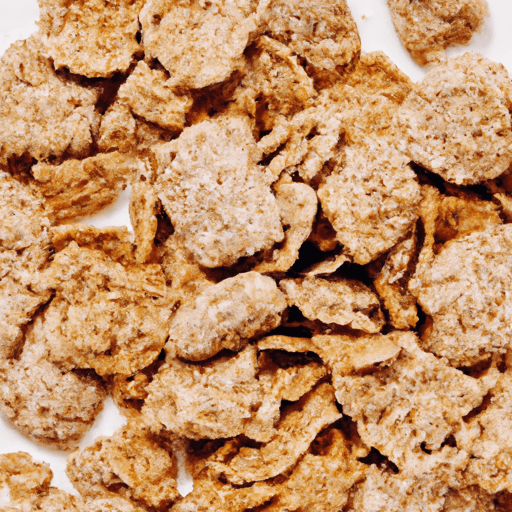All-Bran Cereal: A Versatile and Nutritious Ingredient
Are you looking for a nutritious and delicious addition to your breakfast routine or an ingredient to add some texture and flavor to your recipes? Look no further than All-Bran cereal! This humble cereal is not only a go-to choice for a healthy breakfast but also a versatile ingredient that can elevate your cooking game. In this article, we’ll dive into the world of All-Bran cereal, exploring its taste, common uses in cooking, nutritional value, and some interesting history and facts.
Taste and Texture
All-Bran cereal has a unique taste and texture that sets it apart from other cereals. It boasts a mildly nutty flavor with a hint of sweetness, which can add depth and a pleasant crunch to your dishes. The texture of this cereal is substantial yet delicate, making it ideal for both eating on its own or incorporating it into various recipes.
Common Uses in Cooking
While All-Bran cereal is undoubtedly a popular breakfast choice, it goes beyond being a simple morning bowl of goodness. Its versatility makes it an excellent addition to a wide range of recipes. Here are a few creative ways to utilize All-Bran cereal:
1. Baked Goods
All-Bran cereal adds a satisfying crunch and a touch of sweetness to baked goods. Add it as a topping for muffins, bread, or even use it as an ingredient in granola bars for that extra texture and flavor.
2. Coating for Meat and Vegetables
Crushed All-Bran cereal can be used as a nutritious and high-fiber alternative to breadcrumbs for coating chicken, fish, or even vegetables. It provides a crunchy exterior while keeping the insides tender and flavorful.
3. Smoothie Booster
Give your morning smoothie a boost by sprinkling some All-Bran cereal on top. It not only adds an interesting texture but also ups the fiber content and keeps you satiated throughout the day.
4. Salad Enhancer
Crumbled All-Bran cereal makes for a fantastic salad topper. It brings a delightful crispiness to your leafy greens and adds an unexpected element to your salads, making them more enjoyable and satisfying.
Nutritional Value
In addition to its versatility, All-Bran cereal packs a powerful nutritional punch. It contains a blend of high-fiber bran flakes, wheat, and crisp multi-grain clusters, offering a range of health benefits. A 1/2 cup serving of All-Bran cereal provides:
- Calories: 80
- Total Fat: 1g
- Sodium: 140mg
- Carbohydrates: 24g
- Fiber: 10g
- Protein: 4g
With its impressive fiber content, All-Bran cereal can help support a healthy digestive system, regulate blood sugar levels, and promote weight management. It’s also a great source of essential vitamins and minerals, including iron, potassium, and folate.
History and Facts
All-Bran cereal has a rich history that dates back to its creation in the early 20th century. It was developed by Dr. John Harvey Kellogg as a remedy for digestive ailments. Dr. Kellogg believed that a high-fiber diet could promote good gut health and overall well-being.
Interestingly, All-Bran cereal gained popularity during World War II when it was included in military rations due to its long shelf life and nutritional benefits. Since then, it has remained a staple in many households, loved for its taste, versatility, and health benefits.
Conclusion
All-Bran cereal is not your average breakfast option. Its unique taste, versatile nature, impressive nutritional value, and intriguing history make it a standout ingredient for both everyday meals and special occasions. Whether you sprinkle it on top of your smoothie or incorporate it into your baking and cooking endeavors, All-Bran cereal adds a delightful crunch and an extra dose of fiber to your culinary creations. So go ahead, give this mighty little cereal a try and enjoy the benefits it has to offer!
Note: Nutritional information provided is approximate and may vary depending on the brand and specific product.
All-Bran Cereal
Origin: All-Bran cereal was created by Dr. John Harvey Kellogg in the late 19th century. Dr. Kellogg was a physician and the superintendent of the Battle Creek Sanitarium in Michigan, where he developed various health food products. All-Bran was initially developed as a dietary supplement for his patients.
Common Uses: All-Bran cereal is commonly consumed as a breakfast cereal. It can be eaten with milk or added to yogurt, smoothies, or baked goods. It is also commonly used as an ingredient in recipes such as muffins, bread, and cookies to enhance their nutritional value and provide a hearty texture.
Nutritional Benefits: All-Bran cereal is known for its high fiber content. It is a rich source of dietary fiber, particularly insoluble fiber, which can support digestive health and help prevent constipation. It also contains important nutrients such as iron, phosphorus, magnesium, and B-vitamins like thiamin, riboflavin, and niacin.
Unique Properties: One unique property of All-Bran cereal is its high fiber content. A 1/2-cup serving of original All-Bran cereal contains around 10 grams of dietary fiber. This can contribute significantly to an individual’s daily fiber needs.
Historical Significance: All-Bran cereal gained popularity in the mid-20th century with the rise of health-conscious eating. It became popular as a breakfast food option for those seeking a high-fiber diet. Today, it continues to be a common choice for individuals aiming to increase their fiber intake or maintain a healthy digestive system.




Use the share button below if you liked it.
It makes me smile, when I see it.